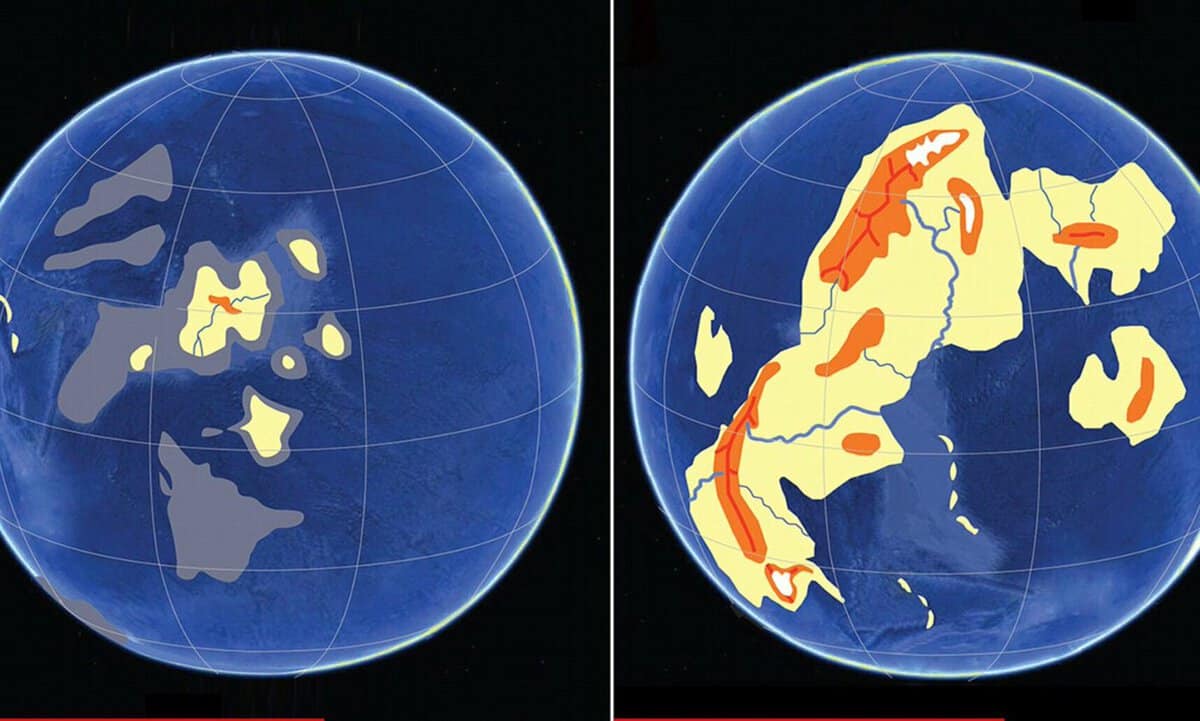Nature possesses an extraordinary imagination. Over the course of four and a half billion years, it has crafted a complex narrative known as The Tale of Life on Planet Earth. Within this narrative, countless fascinating characters emerge. Poisonous zoo predators, trilobites with luminescent eyes, and sophisticated dinosaurs all make their appearance. Additionally, towering horsetails equivalent to five-story buildings, dinosaurs adorned with feathers, dinosaurs resembling porcupines, and even unicorn-like pigs contribute to the intrigue.
Join me as we embark on this remarkable journey together.
The emergence of the sun and the cradle of stars
In the distant past, precisely 4.56 billion years ago, a significant event occurred in the vastness of the Universe. Near the outskirts of our Galaxy, known as the Milky Way, a star underwent a powerful explosion. This explosive event gave rise to the formation of a “stellar cradle” – a swirling cloud composed of icy dust, gas, and rocky fragments.
Over time, this cloud began to contract, causing its rotational speed to increase. As the rotations intensified, the matter within the cloud started to heat up and emit a radiant glow. Eventually, at the core of this cosmic whirlwind, a star burst forth, now known as the Sun. Encircling this newly formed star was a swirling vortex of gas and rock, resembling the appearance of a scrambled egg. The central portion comprised of a massive, scorching-hot “yolk” representing the Sun, while the surrounding area consisted of a “white” dust-like substance.
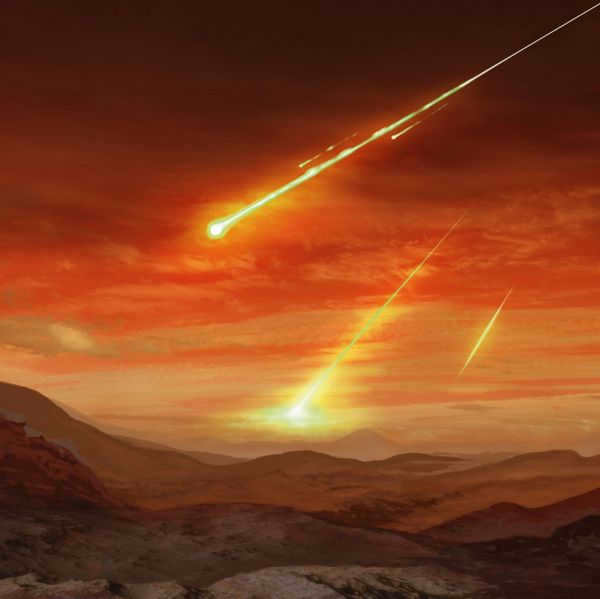
The images provided above are taken from the publication entitled “The History of the Earth”.
Over time, the cosmic dust gradually accumulated and formed into large conglomerates, resembling “snowballs”, ultimately giving rise to solid planets such as Mercury, Venus, Earth, and Mars. This process occurred relatively quickly, taking only a span of 2-3 million years. Meanwhile, lighter gases were transported towards the outer regions of the cosmic vortex, where they coalesced to form the colossal gas giants Jupiter, Saturn, Uranus, and Neptune. During this period, the young Sun emitted an intense, fiery radiance, exhibiting frequent flares and explosions. Additionally, it pulsated, emitting deadly radiation into the surrounding expanse. Astronomers aptly referred to this nascent Sun as a star with a penchant for destruction.
During the era of the Archaea.
During this time period, the Earth resembled a terrifying scene from a horror movie. Acid rain fell from the clouds, yellow sulfur streams flowed down the hills, and everything was exposed to the harsh ultraviolet radiation of the Sun. The only inhabitants of the Earth were microscopic organisms known as microbes. These organisms did not have a nucleus in their cells and were so small that they couldn’t always be seen even under a regular microscope. They had a size ranging from 5 to 15 micrometers, which is much smaller than the thickness of a human hair (about 100 micrometers).
A single drop of water could contain millions of these ancient microbes. They took on various shapes, resembling dashes, beads, sticks, beans, and threads. The bottoms of shallow bodies of water were covered in slimy films composed of billions of these microbes. Other microbial films floated on the waves, buoyed by gas bubbles.
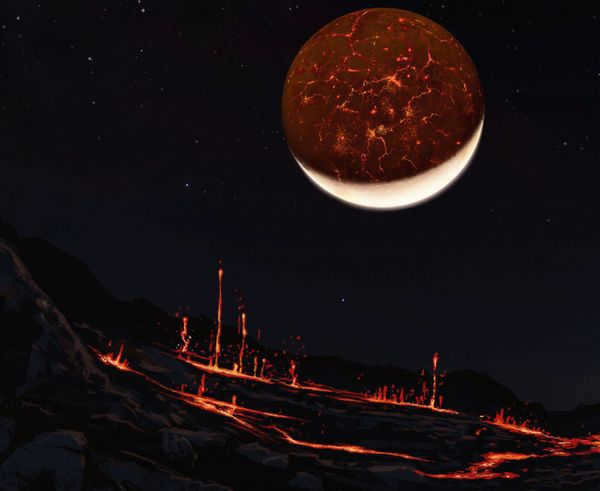
The microbes managed to survive the harmful ultraviolet radiation by producing mucus, a skill they still possess today. This ability makes it challenging to fully sterilize rooms using ultraviolet lamps because the bacteria have the capability to generate protective mucus against the radiation. The bacteria primarily resided in colonies and communicated with each other through chemical and electrical signals.
The Cambrian period (535-485 million years ago) and the extraordinary sight of trilobites.
The Cambrian seas were home to various arthropods, with trilobites being the most remarkable. While most arthropods possessed chitinous shells, trilobites had calcite shells, which have proven to be more resilient in the fossil record. As a result, countless trilobite shells have been preserved over millions of years. Notably, their eyes, resembling those of dragonflies, were frequently found intact. These eyes were also made of calcite, with each facet having its own crystalline lens. Such unique eyes had never been seen before in the history of our planet. Although similar calcareous lens-eyes can be found in starfish and ophiurs, they possess limited visual capabilities.
The trilobites had blue-colored eyes that emitted a glowing light in the darkness. Despite their large and intricate eyes, the trilobites did not possess exceptional vision, although they were adept at determining the speed and trajectory of predators or potential prey. This skill proved to be highly beneficial, as no other animals from the Cambrian period possessed such abilities. Numerous trilobites were carnivorous in nature.
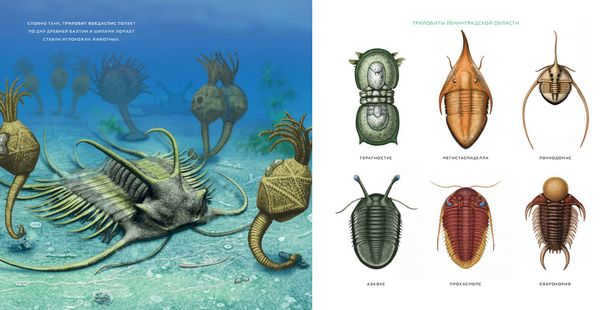
Resembling a formidable tank, the trilobite Combataspis traverses the depths of the prehistoric Baltic Sea, using its spines to crush the stems of echinoderms. The captivating illustrations featured above and below are sourced from the renowned publication “Ancient Monsters of Russia.”
Unbelievable creatures that once roamed the vast lands of Russia
The book “Lost Beasts of Russia” unveils the secrets of extinct Russian animals. It delves into the fascinating creatures whose remains have been unearthed within the borders of our nation. Here are just a handful of astounding revelations from the pages of this book.
– A cozy hideaway for the trunk. In 2015, a remarkable discovery was made regarding the mammoth’s trunk. It was revealed that the mammoth possessed a unique pocket nestled within its trunk. During frigid temperatures, the mammoth would expertly coil the lower section of its trunk and safely tuck it away within this snug pocket, providing extra protection for the delicate tip of its proboscis. This ingenious adaptation is absent in modern-day elephants.
— Biarmosuchus. The primary sensory organ of these carnivorous creatures that lived in what is now the Perm Territory was their eyesight. Biarmozoosuchians possessed unique sclerotic rings in their eye sockets – thin bony plates that functioned like a camera lens. These rings would contract or expand based on the lizard’s focus – whether it was looking at something far away or near itself.
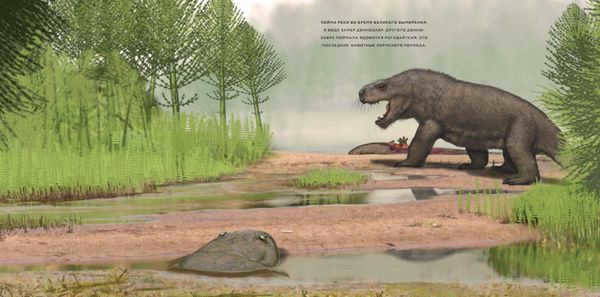
The final creatures of the Permian era, encased in ice in the river.
— Permian reptiles. Estemmenozuhi resembled hippos, except their skin was slimy and damp, similar to a toad. The skulls of young estemmenozuchs were smooth, but as they aged, bumps, horns, and protrusions emerged, eventually forming a complete crown of bone on their heads. Horns were likely covered with a thin layer of skin, allowing for the release of excess iron and salts. This process is similar to how our sweat glands function, except in estemenozuchs, it is not the armpits that sweat, but the horns.
— Unicorn Pigs in Stavropol Krai. The heat was causing the air to melt above the estuaries. Within the mud, enormous Kubanokherus pigs (also known as unicorn pigs) were busy excavating tubers. These remarkable creatures possessed a lengthy snout, four protruding fangs, and a delicate bone horn emerging from their foreheads. The purpose of this horn remains a mystery, perhaps serving as an adornment for the male pigs.
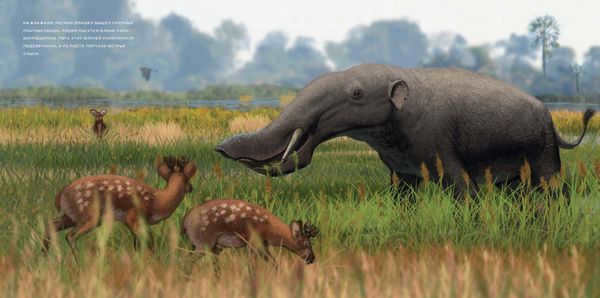
Platybelodon, a prehistoric ancestor of elephants, appeared at the edge of the forest in Stavropol.
— The denizens of Red Square. Entire forests of crinoids thrived on the future site of Moscow and its suburbs. Sea stars and sea urchins scuttled across Red Square, while zoophycus worms left their trails on the ocean floor. Swimming above them were cephalopod mollusks and peculiar relatives of sharks called protopyrates. These fish had a lower jaw shaped like an arc of teeth and only three fins.
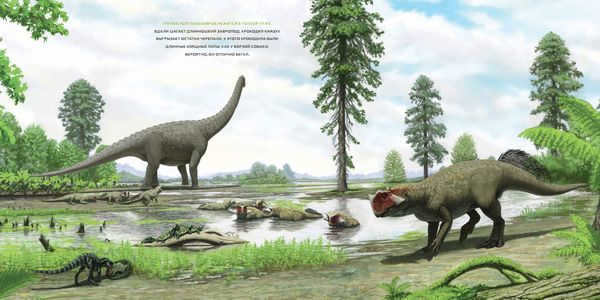
Ancient residents of the Kemerovo area.

First and foremost, it is essential to comprehend the various epochs of the Earth. Essentially, these epochs depict the chronological progression of the planet and the evolution of life on it. This encompasses the creation of the terrain, plant and animal life, and culminates in the emergence of life itself.

According to contemporary theories and hypotheses, our planet was formed through the accumulation of mass caused by gravitational forces. In simpler terms, certain matter expanded and absorbed the space surrounding it. As time passed and the matter cooled, an outer crust developed. Subsequently, there were continuous changes and formations over hundreds of millions of years.
About 3.8 billion years ago, life emerged on planet Earth. This occurred when the Earth’s crust had recently formed. However, life itself, specifically the first living organisms, originated in water. It took another billion years for them to first surface.
This is the result we observe. However, the process continues and we actively participate in it. Nevertheless, our focus here is not on the future but on the past of our home.

The Story of Our Planet
Due to the vast span of time in the history of evolution and the development of life on Earth, scientists have divided it into different eras. These eras, in turn, have been further divided into distinct periods, each marking significant milestones in the overall formation of life.
There are five noteworthy eras that we will discuss in detail below.
According to historical records, the Archean period of the Earth occurred approximately 4.6 billion years ago. During this time, the planet was still in the process of forming and life as we know it was nonexistent. The atmosphere was composed primarily of chlorine, hydrogen, and ammonia, resulting in extreme radiation levels and temperatures reaching 80 degrees Celsius.
Scientists theorize that during this period, the Earth experienced a significant collision with a massive celestial object. The remnants of this object then settled into orbit around the Earth, giving rise to our natural satellite, the protoluna. However, the impact had further consequences beyond the creation of the moon. The Earth’s rotational velocity and axis tilt underwent dramatic changes, leading to the formation of an atmosphere and the subsequent condensation of water vapor into oceans. It was within these oceans that the first forms of life, bacteria, emerged.
This marks a pivotal juncture in the development of our planet. Indeed, it is the culmination of countless processes that have paved the way for the eventual emergence of life on Earth.

The Proterozoic Era of Earth
In actuality, this period spanned from 2.5 to 540 billion years ago. Throughout this timeframe, terrestrial soil and single-celled organisms were formed, including mollusks, worms, and algae.
Initially, there was an absence of oxygen in the atmosphere. However, aquatic bacteria began producing it, and some even developed the ability to engage in aerobic respiration.
The Paleozoic Era of the Earth
The Paleozoic Era is comprised of six distinct periods.
The Cambrian period
The Cambrian period occurred between 530 and 490 million years ago. It was during this time that the Earth’s flora and fauna began to take shape. Due to the extreme temperatures, life could only thrive in the ocean. Algae, mollusks, and arthropods were the dominant species found in these ancient waters.
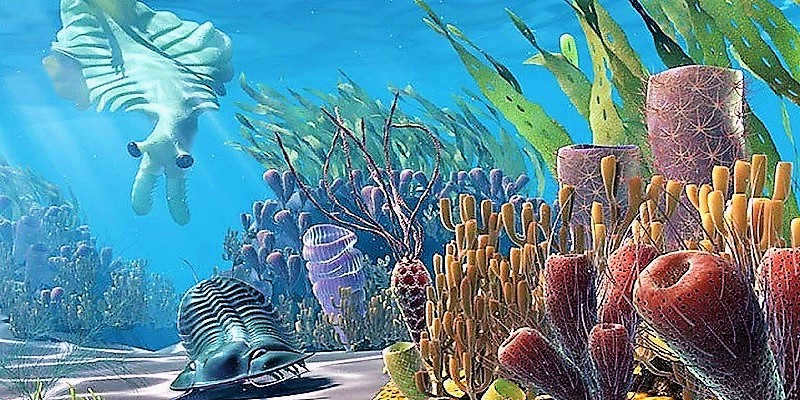
The Ordovician era
Encompasses the period from 490 to 442 million years ago. During this time, the marine environment saw the arrival of various new life forms, including vertebrates, corals, and sponges. Additionally, the surface of the Earth witnessed the emergence of lichens and early arthropods.
The period from 442 to 418 million years ago is marked by the appearance of plants on land and the development of lung tissue in arthropods. Additionally, vertebrates evolve a bony skeleton and enhanced sensory capabilities. Furthermore, this stage sees the formation of climatic zones and mountains.
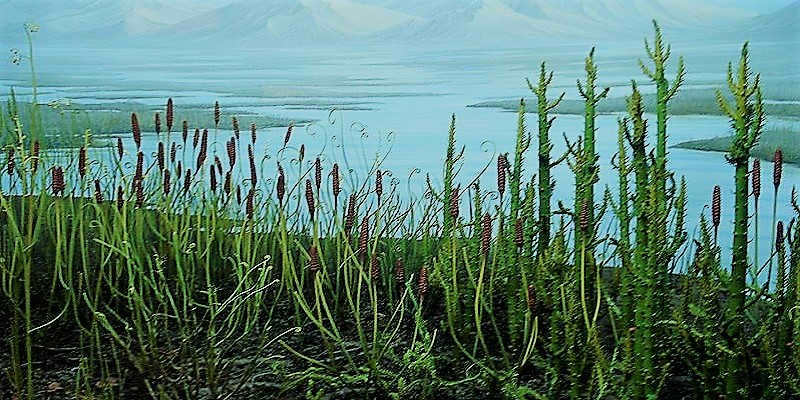
Devonian Era
The subsequent period (418-353 million years ago) is distinguished by the presence of woodlands, specifically forests dominated by ferns. The aquatic environments were inhabited by various species of bony and cartilaginous fish, as well as amphibians capable of living on both land and water. It is worth noting that this era also witnessed the emergence of insects.
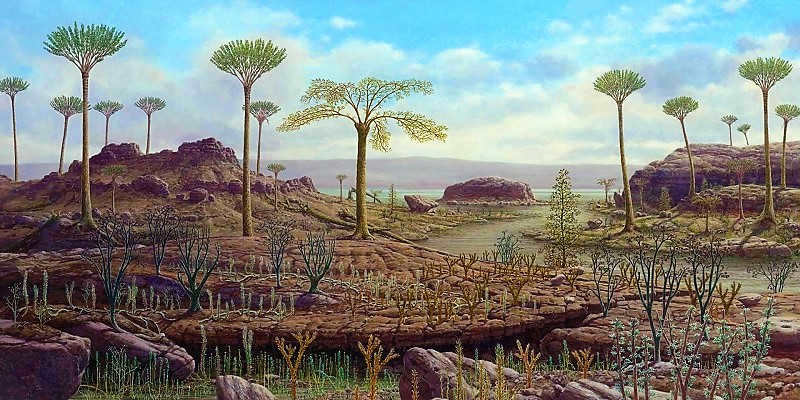
The Carboniferous Period
The Carboniferous Period was a significant phase in the evolution of life, lasting from 353 to 290 million years ago. This period was characterized by the emergence of amphibians and the gradual sinking of the existing continents. Towards the end, there was a significant drop in surface temperatures, leading to the extinction of numerous species.
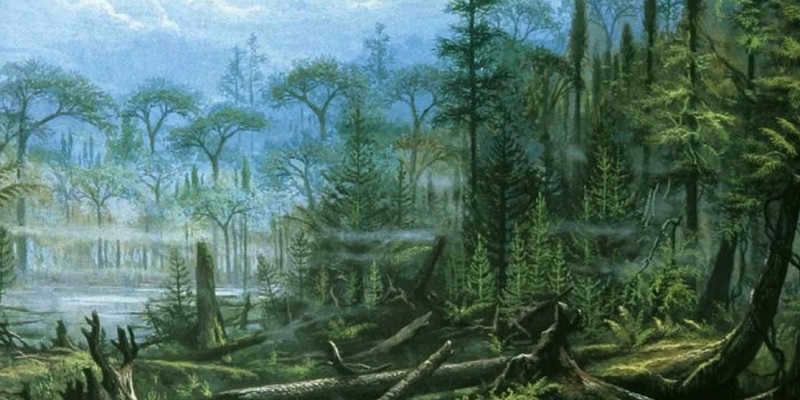
Permian era
During the time span of 290 to 248 million years ago, the Permian era took place. This era witnessed the rise of reptiles and the ancestors of mammals known as therapsids. Despite the persistently high temperatures, deserts became a prominent feature on the Earth’s surface. However, even within these arid environments, ferns and conifers managed to endure.
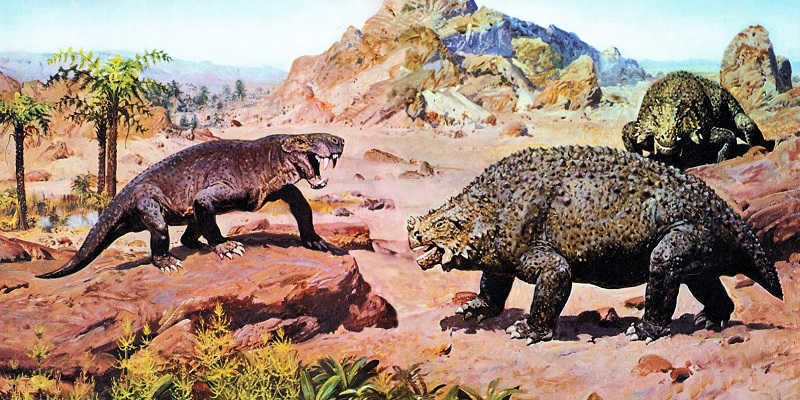
The Mesozoic Era
The Mesozoic Era is divided into three distinct time periods.
The Triassic Period
The Triassic Period spanned from 248 to 200 million years ago. During this time, the Earth’s landmasses started to break apart, ancient mammals emerged, and there was a diversification of plant species.
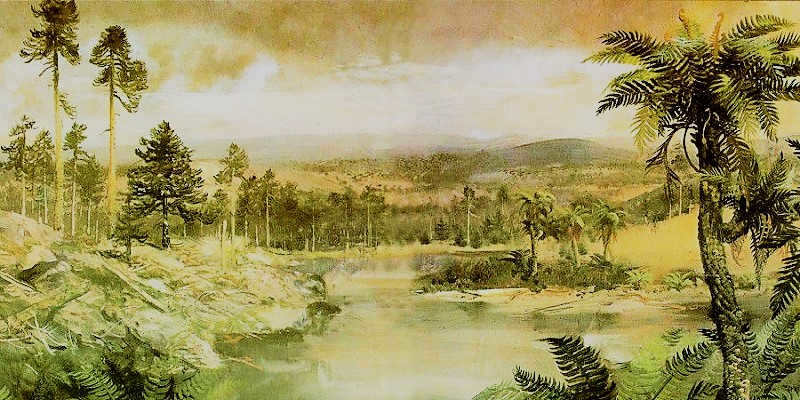
The Jurassic Era
You’ve likely come across the Jurassic Era before. In reality, this period (200-140 million years ago) is notable for the appearance of vegetation and the ancestors of avian creatures.
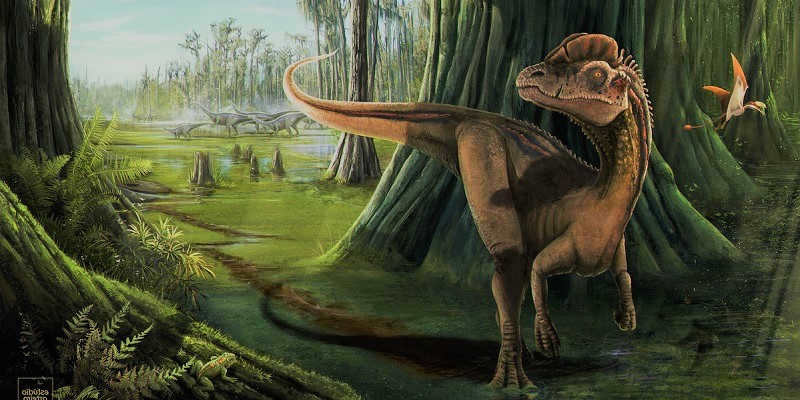
The Cretaceous Era
Next comes the period from 140 to 65 million years ago. During this time, the dominant plants are now those that reproduce through seeds that are hidden. Additionally, there is an emergence of more advanced mammals and birds.
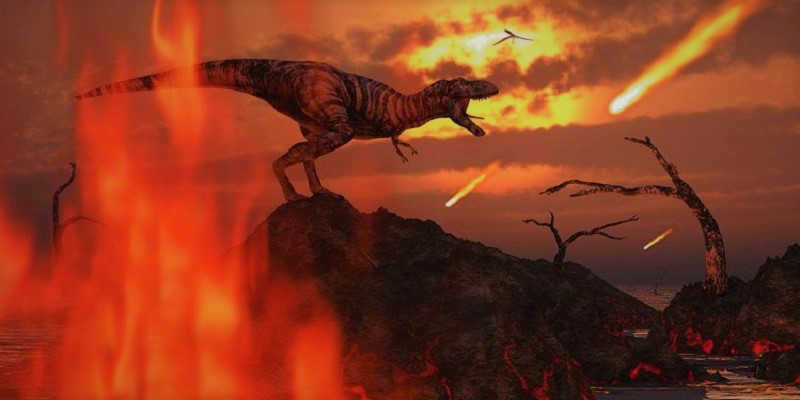
The Earth’s Cenozoic Era
By the way, this era was divided into three periods:
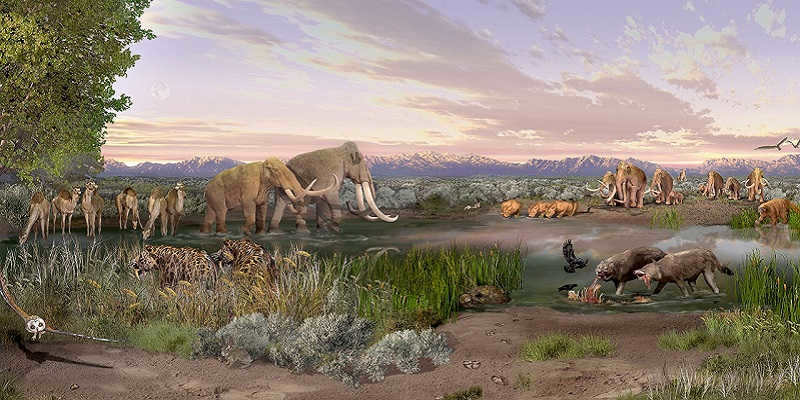
- The Paleogene era, also known as the Lower Tertiary period, spanned from 65 to 24 million years ago. During this time, numerous mollusk species vanished while new species emerged. Notably, primates such as parapithecines and dryopithecines appeared.
- The Neogene epoch, also referred to as the Upper Tertiary, thrived from 24 to 2.6 million years ago. Mammals and plant species flourished both on land and in water, while our earliest ancestors, Australopithecus, emerged. Additionally, the formation of the Himalayas and the Alps took place during this period.
- The anthropogenic era, known as the Quaternary epoch, began 2.6 million years ago and continues to the present day. This period witnessed the appearance of humans, starting with the Neanderthals and eventually Homo sapiens. Furthermore, the entire animal and plant kingdom surrounding us took shape.
It is interesting to note that the entire historical trajectory of the planet is also divided into two main periods:
- The Cryptozoic (Precambrian), which includes the Archean and Protezoic eras;
- Phanerozoic, which encompasses the Paleozoic and Cenozoic eras of the Earth.
Therefore, we have discovered the eras and periods of the Earth’s formation and the current era we are in. To clarify, we are currently living in the Cenozoic era, more specifically the Anthropocene. This may eventually come to an end, but that does not signify the end of life.
The way life has evolved is undeniably significant, valuable, and fascinating for us. One could argue that our existence is the outcome of everything that has transpired on and to the Earth. Let us remain hopeful that we are currently witnessing another phase in its development and evolution towards a superior and more advanced life.
It is crucial to have knowledge, comprehension, and appreciation of history, and most importantly, to contemplate our present actions. As they have a direct impact on the future of the entire planet.
Our magnificent blue-green planet, teeming with life, Earth, has witnessed remarkable transformations over time. From a blazing orb to a frozen sphere, Earth has traversed a remarkable journey long before the first human beheld these marvels.
Earth is one of the terrestrial planets within our solar system. The solar system is currently believed to be in the middle phase of its existence, signifying that in over 4.5 billion years, Earth will ultimately meet its demise. Along with all the organisms that inhabit it. Only time will tell if humanity will endure until then.
Humans have only existed for a brief moment compared to the Earth’s long lifespan. The Earth’s history began with a hostile environment that would have been inhospitable to us, much like Venus is today.
Over millions of years, the Earth gradually transformed into the livable paradise we know today. It remains unparalleled in its unique characteristics.
The history of our planet is a series of catastrophic events and periods of relative calm. Continents and oceans have shifted, dangers have abounded, and life has continuously adapted and persevered.
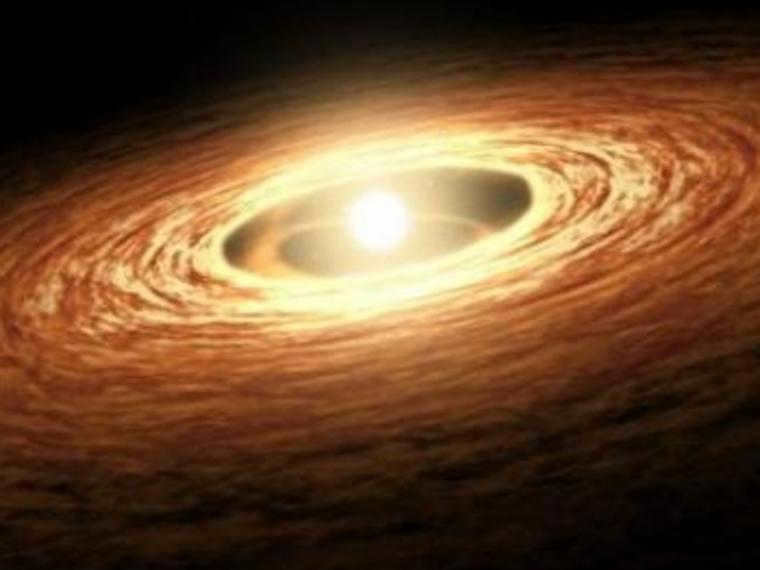
What does the future have in store for planet Earth? That’s a different tale altogether. Right now, let’s delve into the captivating history of our planet.
5 billion years ago: the formation of the solar system
If we were to travel back in time five billion years, we would find ourselves in a vastly different environment. Instead of our familiar surroundings, we would be witnessing a swirling ring of dust surrounding a nascent star. This is the very moment when our solar system was taking shape.
Over the course of a few hundred million years, the force of gravity caused the dust particles to clump together, forming rocks, and eventually leading to the creation of a protoplanet.
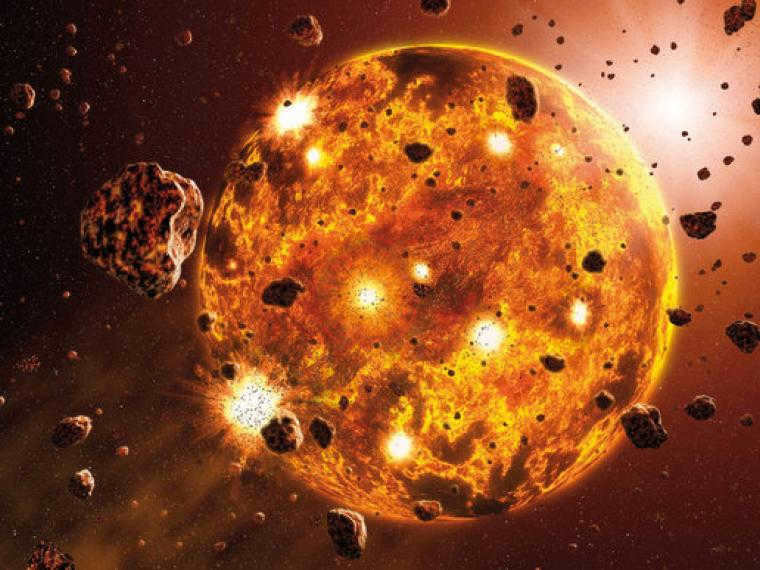
4.5 billion years ago: the Earth’s inception.
At the start, our planet existed as a colossal mass of liquefied rock, seething in intense heat. It is approximated that upon its formation, the Earth boasted a surface temperature of roughly 1200 ºC. It likely harbored water vapor, carbon dioxide, and nitrogen, yet oxygen was absent. Continents had yet to materialize, with only a vast expanse of molten lava comprising the primordial ocean.
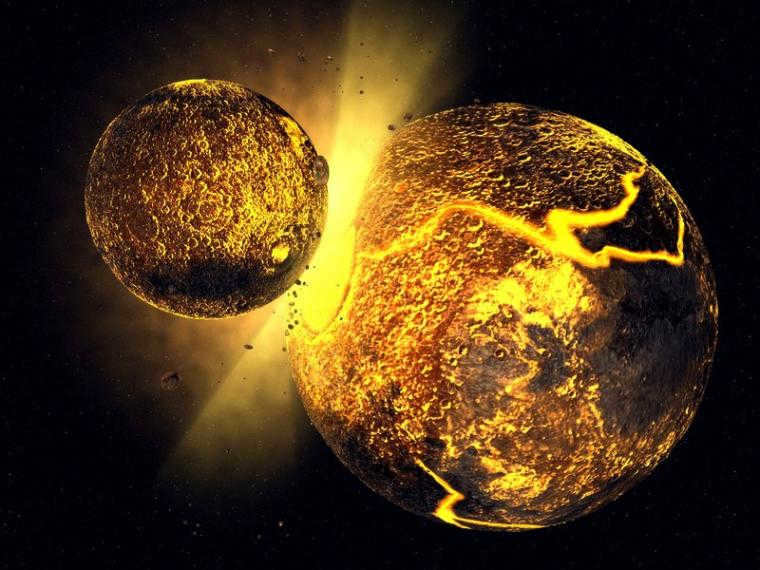
Theia smashes into the Earth: the birth of the Moon
An infant planet the size of Mars hurtles towards Earth at a speed of 15 kilometers per second, a staggering 20 times faster than a bullet. This celestial body goes by the name of Theia. It was one of the newly formed rocky protoplanets within our solar system.
Eventually, a cataclysmic collision takes place, ejecting a vast amount of material outward. It is from this debris that a natural satellite would eventually take shape. Following the collision, the debris remains in a ring-like formation, akin to Saturn, for millions of years until our moon finally forms.
During this time, the Earth’s rotation is much faster, resulting in a day lasting only six hours.
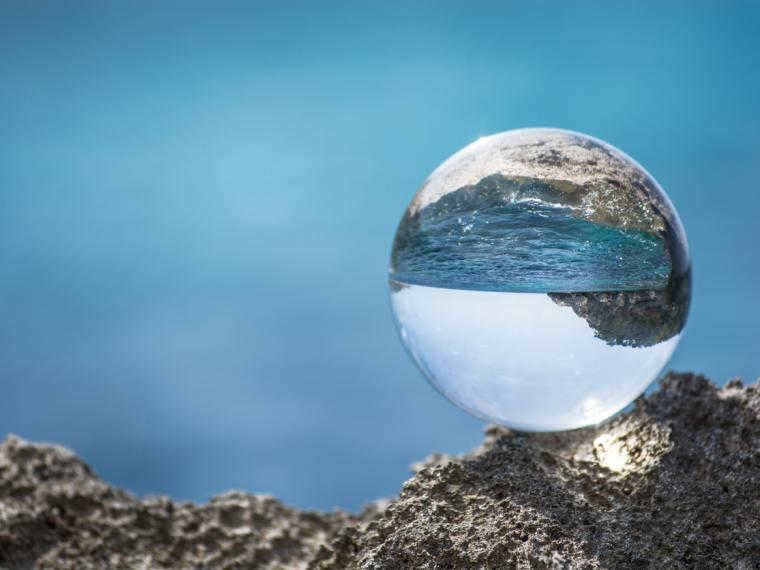
3.9 billion years ago: The reign of water commences on Earth.
There are two theories regarding the existence of liquid water on Earth. The first posits that it gradually accumulated on the surface through precipitation, brought by asteroids that collided with our planet over a span of 20 million years. The second theory suggests that water was already present from the start, concealed beneath the crust.
During this epoch in Earth’s chronology, the oceans govern our planet. Nevertheless, there is still no sign of any life form, not even microorganisms.

Origin of life: emergence of primitive organisms.
In accordance with the hypothesis of panspermia, crucial amino acids for the development of life were transported by meteorites and deposited in the depths of the oceans. As a result, water now harbors unicellular organisms, representing the initial life forms on our planet.
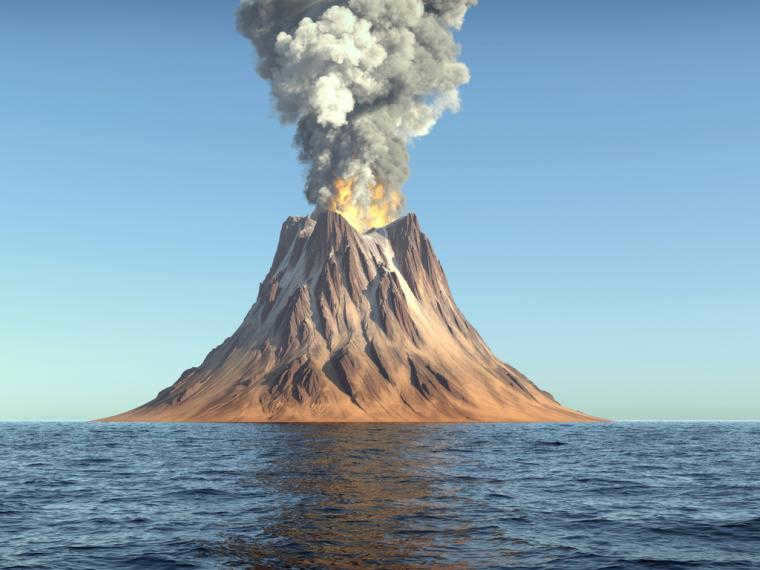
The birth of the first islands: 3.8 billion years ago
The surface of the oceans was disrupted as volcanic islands emerged. Over time, these islands fused together to create the inaugural continents. The volcanic activity during this period also resulted in an increase of carbon dioxide in the atmosphere.
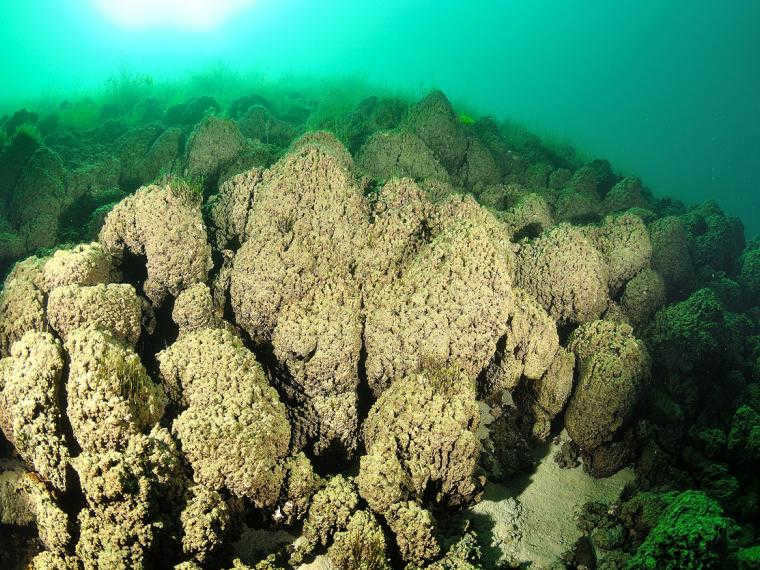
3.5 billion years ago: the emergence of stromatolites, the earliest complex organisms.
Stromatolites, which were colonies of bacteria, marked the advent of complex life on Earth. Through the process of photosynthesis, they converted carbon dioxide into glucose and released oxygen into the environment. As time passed, stromatolites gradually saturated the oceans with oxygen.
Over the course of millions of years, stromatolites continued to enrich the ocean with oxygen, leading to the formation and thickening of the atmosphere. These bacterial colonies served as a foundation for the development of other life forms on our planet.
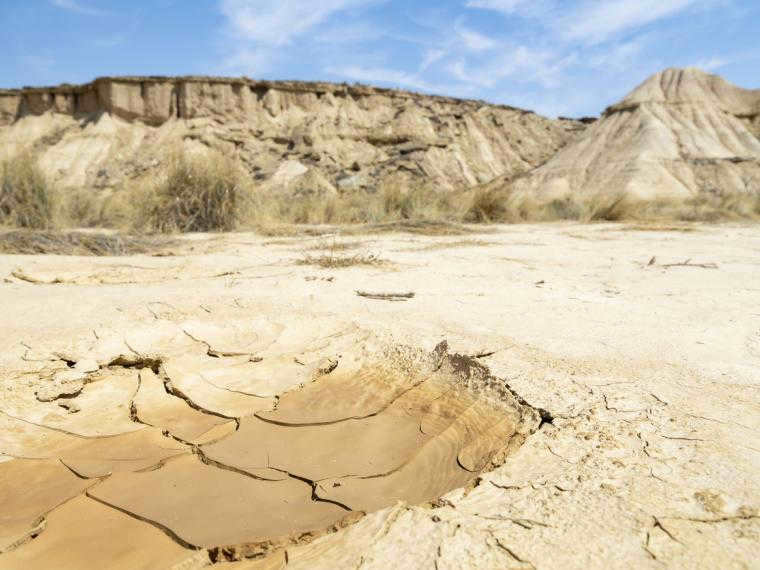
Formation of Rodinia 1500 million years ago
The rotation of the Earth continues to decelerate, resulting in 16-hour days. After millions of years of plate tectonics, Rodinia, the first supercontinent, emerged. Rodinia was characterized by extreme aridity in its interior.
Approximately 800 million years ago, Rodinia began to disintegrate under the influence of the Earth’s internal heat, while the core remained molten.
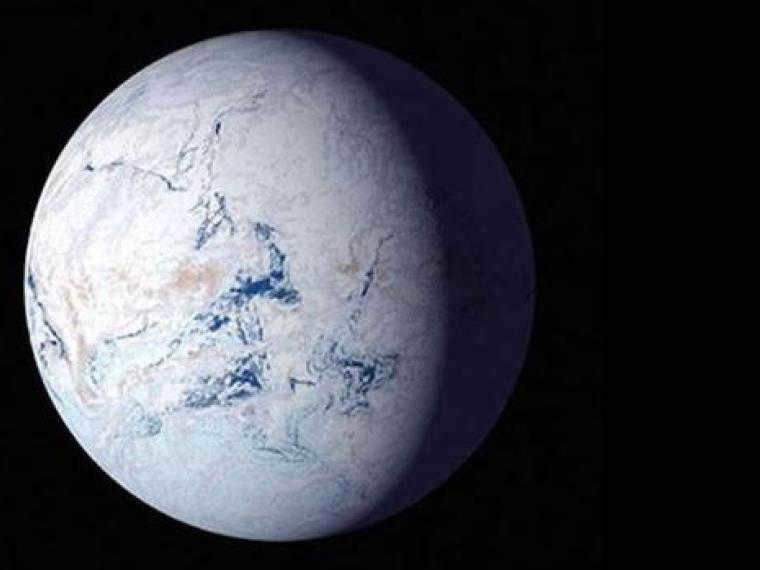
The Earth’s Snow Age: 750 Million Years Ago
Following the extensive volcanic activity that resulted in the destruction of Rodinia, a large amount of carbon dioxide is released and absorbed by rocks. However, there is insufficient carbon dioxide to effectively trap solar heat in the atmosphere. As a result, there is a drastic climate change and a significant decrease in temperature. This marks the beginning of the longest and most severe global ice age in the history of our planet. During this period, nearly the entire Earth’s surface is covered by a layer of ice approximately three kilometers thick, with an average planetary temperature of -50 ºC.
Eventually, after 15 million years have passed, the ice is finally breached by volcanic activity, resulting in the gradual release of CO2 into the atmosphere once more. This occurrence, devoid of any rocks to act as carbon dioxide sinks, leads to a significant increase in atmospheric CO2 levels, ultimately triggering yet another bout of climate change and a subsequent rise in temperature. Consequently, these environmental shifts further accelerate the ongoing process of ice melting.
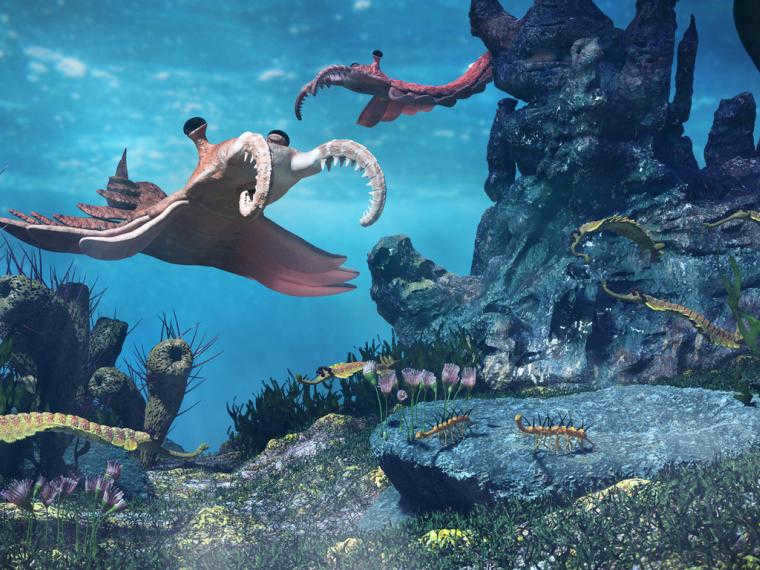
540 million years ago: the emergence of life
While the Earth was covered in a layer of ice, beneath the frozen crust, liquid water continued to thrive. When the ice melts, approximately 540 million years ago, an event known as the Cambrian explosion occurs, marking the emergence of life during the Cambrian period.
At this time, the length of the days is 22 hours, temperatures become milder, and a diverse array of multicellular life forms emerge in the water. Countless species of plants and animals make their appearance, including algae, trilobites, sponges, worms, and anomalocaris. These organisms serve as the ancestors of modern insects. Additionally, the early vertebrate known as picaias also makes its debut.
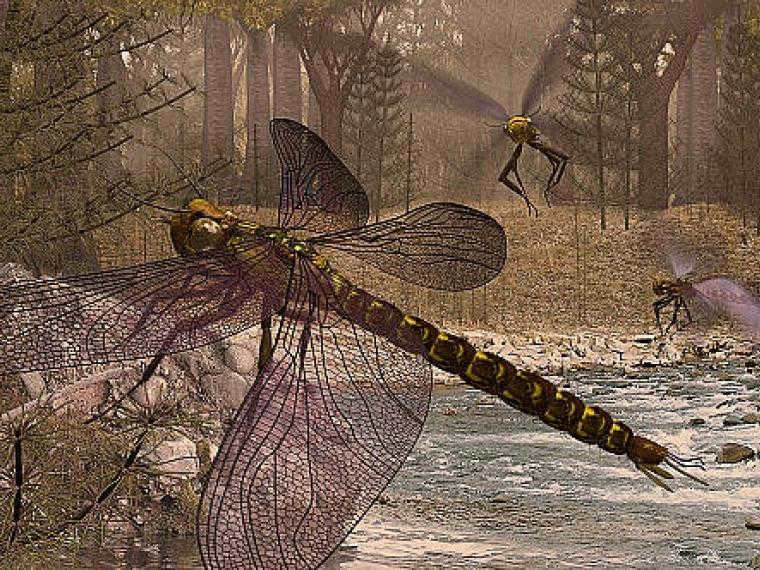
370 million years ago: the emergence of life on land
The evolution of life on land was made possible by the ozone layer, which protected underwater creatures and allowed for the development of new species. The abundance of oxygen in the atmosphere, a result of the explosion of life underwater, reacted with sunlight to create ozone. Ozone played a crucial role in absorbing harmful radiation from the sun, enabling life to thrive on land. The thickening of the ozone layer marked the beginning of plant species on Earth.
However, the animals of the Cambrian explosion faced a new challenge during the Devonian-Carboniferous mass extinction. Some of them managed to survive and eventually ventured onto land, where they began to colonize the mainland.
Throughout history, the Earth has become populated by a variety of animals. We currently find ourselves in the midst of the Paleozoic era, a time when the planet was ruled by large insects such as meganeira (depicted in the image).
During this era, a significant evolutionary development took place as animals and plants began to venture beyond their dependence on water and successfully establish themselves on land. It was during this time that the first reptiles emerged, gradually asserting their dominance over the planet.
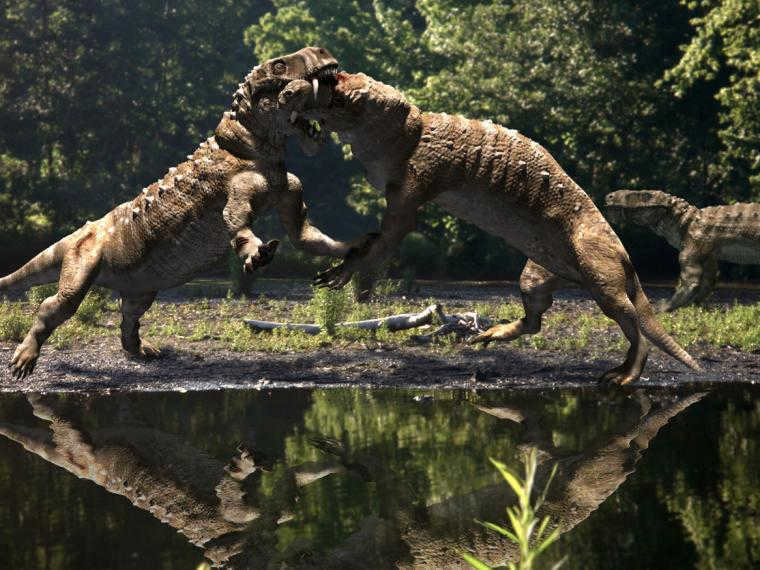
The end of the age of reptiles: 252 million years ago
For countless years, various types of massive creatures reigned supreme on our planet. These were not dinosaurs, but rather enormous reptiles like gorgonops. The majority of them perished in the Permian-Triassic mass extinction, which stands as the third largest extinction event in Earth’s history and the most devastating one it has ever witnessed.
During this event, 95% of all living beings were wiped out, leaving only a handful of species to inherit the Earth.
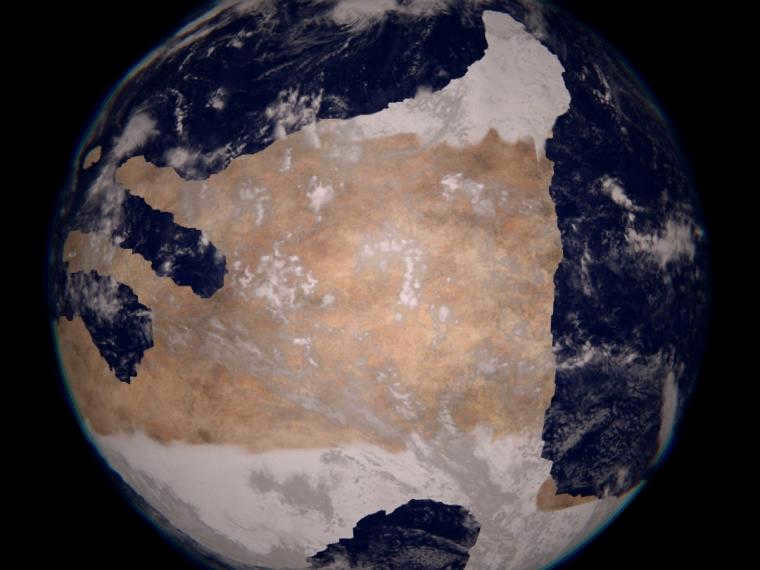
190 million years in the past: the separation of the supercontinent Pangaea
Pangaea signifies the conclusion of the Paleozoic Era and the commencement of the Mesozoic Era. Pieces of Pangaea serve as a blueprint for the configuration of our present-day continents.
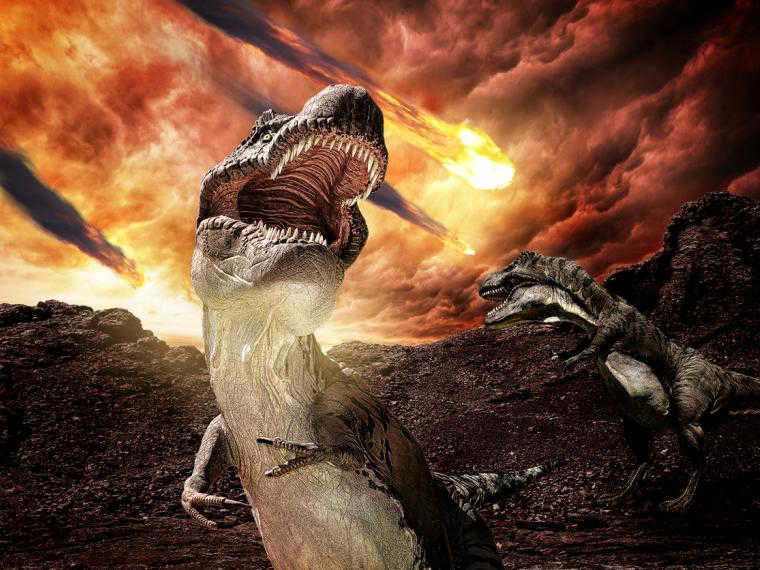
Changes in the Earth’s surface led to the need for adaptation among animals. The dominant species now are the Great Saurians, who have established their dominance over both land and sea.
66 million years ago: the dinosaurs met their end.
The reign of the dinosaurs came to a close 66 million years ago. This was due to a catastrophic event where an 11-kilometer asteroid collided with the Earth. The impact resulted in the fifth mass extinction event known as the Cretaceous-Paleogene mass extinction. During this event, 76% of all species disappeared, including all dinosaurs except for the ancestors of birds.
For mammals, this event provided a tremendous opportunity. At that time, mammals only existed as small rodents. However, they were able to survive underground, sustaining themselves by consuming roots and grains. This allowed them to endure the cataclysm and ultimately thrive.

The Anthropocene Era
Scientists are referring to the Anthropocene era as a new geological stage of the Earth due to the significant impact of human activities on the planet.
We now have evidence of another climate change caused by human industrial activities, and we are currently witnessing the beginning of the sixth mass extinction.
The question of how the Earth was formed has captivated scientists for centuries. There have been various theories, ranging from religious interpretations to modern ones based on deep space studies.
Since no one was present during the formation of our planet, we can only rely on indirect “evidence”. Fortunately, we have the aid of powerful telescopes to help unravel this mystery.
The celestial system
The origin and progression of the planet we call home is closely intertwined with the emergence and development of the celestial body that it orbits. Therefore, let us begin our journey from a distant past. Scholars propose that following the cataclysmic event known as the Big Bang, it required approximately one to two billion years for galaxies to attain their current form. In contrast, it is believed that the celestial system took shape a staggering eight billion years thereafter.
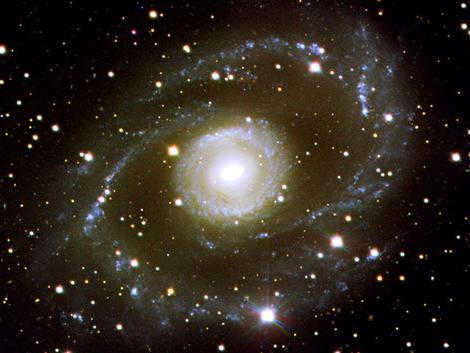
Hypotheses from various time periods
As previously mentioned, there has long been speculation surrounding the formation of planet Earth. It wasn’t until the 17th century AD that the first scientific explanations started to emerge. During this time, numerous discoveries were made, including the establishment of physical laws. One hypothesis suggests that Earth was created through the collision of a comet with the Sun, resulting from the remnants of a matter explosion. Another theory posits that our solar system originated from a frigid cloud of cosmic dust.
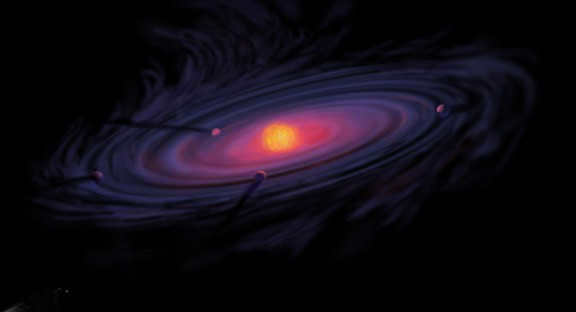
The particles of the latter collided and merged together until the formation of the Sun and the planets took place. Conversely, French researchers have proposed that the cloud was extremely hot and as it cooled, it began to rotate and contract, resulting in the formation of rings. The final ring eventually gave rise to the planets, with the Sun appearing at the center. An English scientist named James Jeans suggested that another star had previously passed close to our sun, causing it to lose some of its matter due to gravitational attraction. This matter eventually coalesced and formed the planets.
As per contemporary scientists, the solar system originated from frigid particles of dust and gas. The material underwent compression and disintegration, resulting in the formation of multiple fragments. The largest fragment eventually evolved into the Sun, rotating and generating heat to become a disk-like structure. The dense particles located at the outer edges of this gas and dust cloud then coalesced to form the planets, including our very own Earth. Simultaneously, at the core of the developing star, intense temperatures and immense pressure triggered thermonuclear reactions.

In the quest for exoplanets resembling Earth, a hypothesis has emerged suggesting that the presence of heavier elements in a star reduces the likelihood of life originating in its vicinity. This is because the abundance of these elements results in the formation of gas giants, similar to Jupiter, around the star. These gas giants then exert gravitational forces that cause smaller planets to be displaced from their original orbits.
Date of birth
Birth date
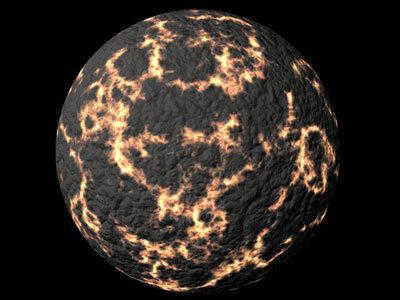
The planet Earth came into existence around 4.5 billion years ago. The fragments revolving around the luminous disk gradually gained more weight. It is believed that initially, these fragments were attracted to each other through electrical forces. Eventually, when the mass of this “clump” reached a certain point, it started to exert gravitational pull on everything in its vicinity.
Similar to the Sun, this clump began to contract and heat up. The material became completely molten. Over time, a denser core formed, primarily composed of metals. As the Earth took shape, it gradually cooled down, and lighter substances were used to create the crust.
Collision
Following the assumptions of scientists and based on the minerals discovered on our satellite, the Moon emerged in a unique manner, distinct from the formation of Earth. It is believed that after the Earth had already undergone the cooling process, it encountered another planet, slightly smaller in size, resulting in a collision. This collision caused both objects to completely liquefy and merge into one cohesive entity. The expulsion of matter from the explosion then began to orbit around the Earth, ultimately giving rise to the Moon. Interestingly, the minerals found on the satellite display a different structure compared to those found on Earth, suggesting that the substance underwent the process of melting and solidification once again. However, it is worth noting that a similar scenario also occurred on our own planet. The question remains: why did this catastrophic collision not result in the complete annihilation of the two objects, leading to the formation of numerous smaller fragments? The answer to this question, among others, continues to elude us, leaving behind a multitude of unsolved mysteries.
Afterwards, the Earth started to cool down once more. Once more, a metallic core was formed, followed by a thin outer layer. And in between them, there existed a relatively fluid substance known as the mantle. Through intense volcanic activity, the atmosphere of the planet was created.
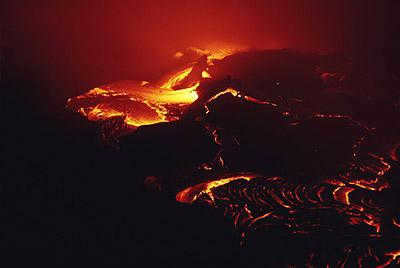
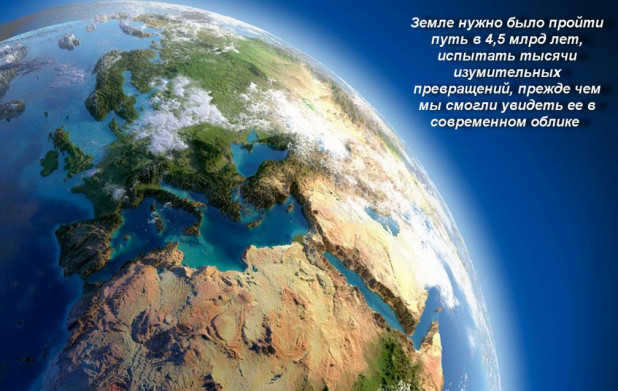

Over billions of years, the Earth has undergone a gradual formation process, resulting in the creation of a truly magnificent planet within our Solar System. What sets Earth apart from the rest is its breathtaking blue oceans, the glistening glaciers found in Greenland and Antarctica, and the vibrant colors that adorn its continental surface. Throughout this lesson, we will delve into the intriguing geological history of our planet, exploring the fascinating origins of continents and ocean trenches. Additionally, we will examine the concept of the geographical shell and its profound impact on both the natural world and human civilization. Lastly, we will unravel the remarkable diversity found on Earth, seeking to understand the various factors that contribute to this unparalleled richness of life and landscapes.
Geologic History of the Earth
Origin of the Continents and Ocean Basins
The Earth is a unique planet with its own distinct structure, composition, and developmental history. Its position in the solar system, along with the presence of organic life, further sets it apart from other celestial bodies. With an estimated age of 4.54 billion years, the Earth’s formation can be divided into two main stages:
The first stage, known as the planetary stage, lasted approximately one billion years and culminated in the creation of the primary hydrosphere and atmosphere.
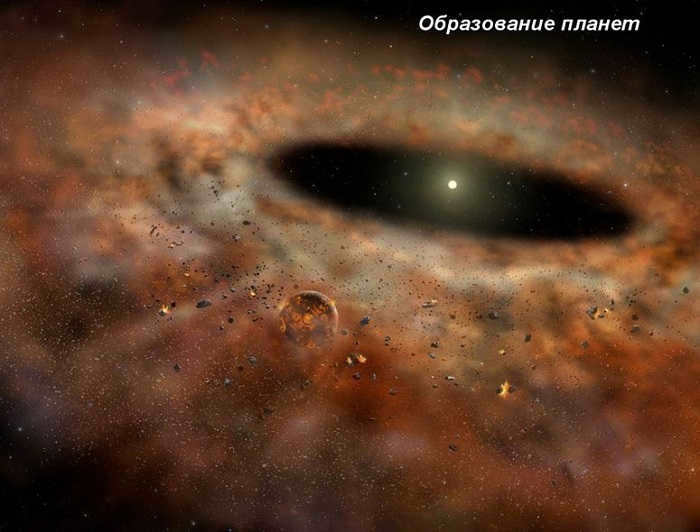
Source
According to a particular hypothesis, approximately 14 billion years ago, an event known as the Big Bang occurred, signifying the inception of the universe. This momentous event led to the formation of the solar nebula, a spinning cloud of interstellar gas and dust comprised predominantly of hydrogen and helium, along with other denser elements. Roughly 4.54 billion years ago (approximately equivalent to the age of our planet), the nebula began to contract and intensify its movement (possibly due to a novel shockwave or explosion), resulting in the collision and merging of substantial fragments of celestial bodies, ultimately giving rise to protoplanets. This is the origin story of our planet, initially in a molten and scorching state due to intense volcanic activity and continuous encounters with other celestial bodies – a youthful planet. However, over time, the outer layer cooled, culminating in the formation of the Earth’s crust.
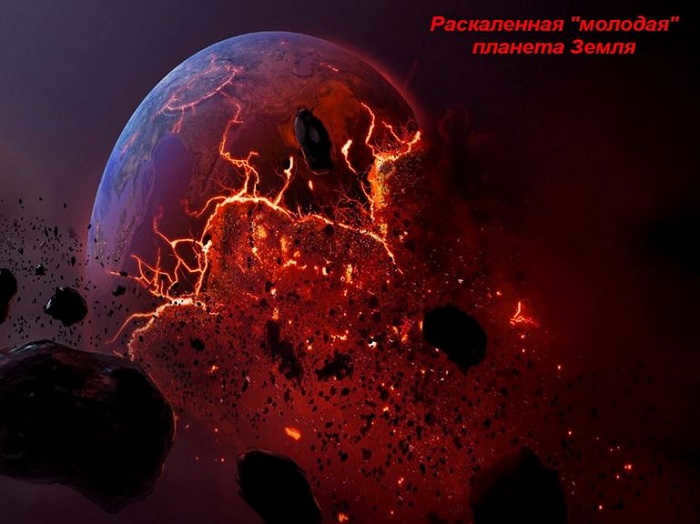
Source
There are also only theories about the origin of water. One theory suggests that water arrived on Earth from space during the planet’s formation, brought by comets and asteroids. Another theory proposes that as the planet cooled, it released a large amount of carbon dioxide, which allowed the release of water vapor. This vapor combined with the carbon dioxide to form a thick layer of clouds. The condensation of water vapor then led to a prolonged period of heavy rainfall, lasting for millions of years.
The commencement of the geological stage is deemed as the formation of the Earth’s crust in its present form. By examining rocks and determining their age, scientists have categorized the entire geological timeline of the Earth into numerous extensive intervals – eras in the geological annals of the Earth, spanning from tens of millions to hundreds of millions of years. These eras are then subdivided into periods, each lasting for tens of millions of years.
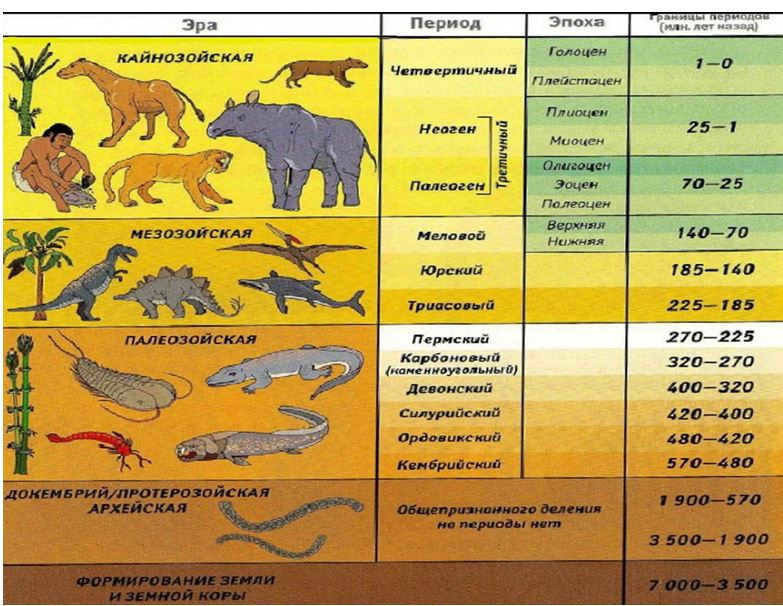
Original Source
The planet’s appearance is influenced by the continents and oceans, which are the largest features on Earth. These landforms have distinct geological formations:
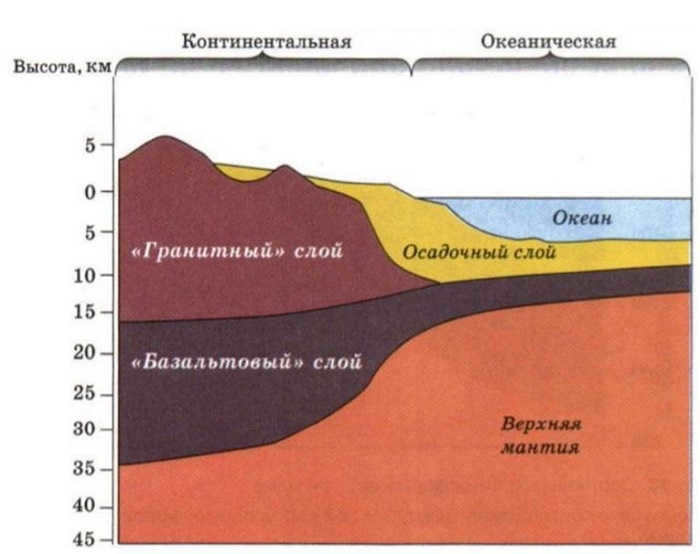
Source
In the early 20th century, a German scientist named Alfred Wegener brought attention to the similarities between the coastlines of Africa and South America and formulated the hypothesis of continental drift. He proposed that the continents were once connected and then separated over time. By the end of the 20th century, new information about the processes occurring in the Earth’s interior led to the development of the theory of the Earth’s crust structure, which is based on the movement of lithospheric plates.
According to the theory of continental drift, the Earth’s crust is fractured by faults that divide the lithosphere into large blocks or plates, with an average thickness of 80 km.
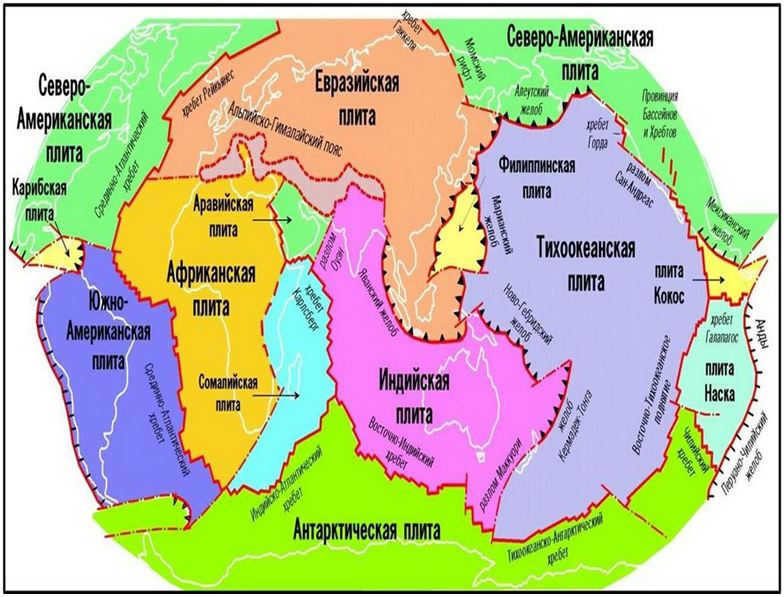
Source
There are seven main blocks and numerous smaller plates that can be identified. The borders of lithospheric plates in the oceans are traced along:
- deep-sea troughs;
- mid-ocean ridges;
- foothill troughs;
- mountain belts.
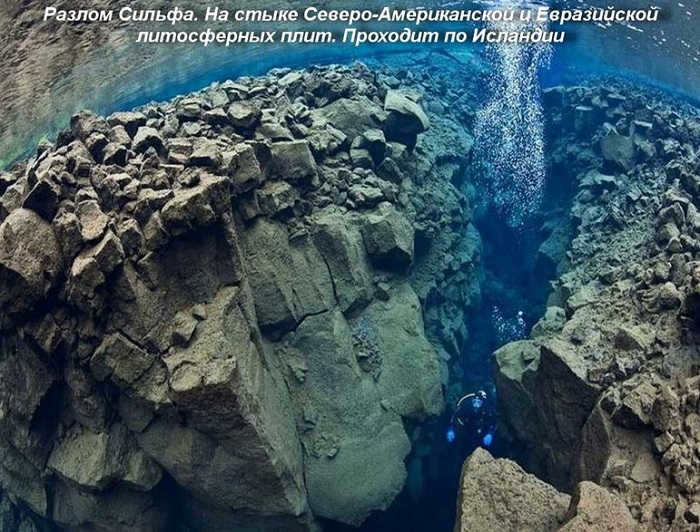
Source
The Earth’s lithospheric plates are situated on a flexible mantle, which they glide on. Their movement is gradual, with a speed of up to 6 cm per year (estimated from satellite imagery), traveling from underwater ridges to trenches, converging and diverging, sliding past one another.
By utilizing the concept of lithospheric plate motion, earth scientists are able to reconstruct the history of continental drift from its inception.
- Rodinia, which emerged 1.15 billion years ago, was an immense continent that dominated the Earth. It was surrounded by the vast Mirovia Ocean, and its exact location and shape have been a source of ongoing scientific inquiry. The prevailing theory suggests that North America was at the center of Rodinia, with other landmasses and islands orbiting around it. Roughly 750 million years ago, the continent started fragmenting into smaller landmasses and islands due to volcanic activity and magma eruptions. Simultaneously, new oceans began to take shape from the remnants of the Mirovia Ocean.
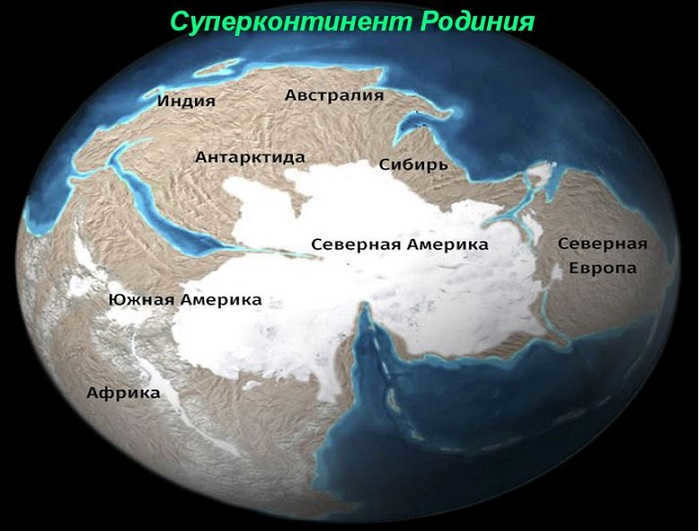

Attribution
- Pannotia, the second hypothetical supercontinent, originated 600 million years ago from the combination of Proto-Laurasia and Proto-Gondwana, which emerged after the fragmentation of Rodinia. Pannotia took the form of a V-shaped supercontinent and was surrounded by the Panthalassus proto-ocean and the Pan-African proto-ocean. This supercontinent existed for a mere 60 million years before it fragmented, giving rise to the continent of Gondwanna and several smaller landmasses.
- Pangaea, the next and most recent supercontinent, emerged 335 million years ago after the breakup of Pannotia and lasted for 165 million years, uniting the entire landmass. During its formation, mountain systems were created as the ancient continents collided, with the Ural Mountains in Russia and the Appalachians in North America still standing as remnants. The vast Panthalassa ocean surrounded Pangaea. Eventually, Pangaea split into Gondwana and Eurasia around 175 million years ago. Eurasia further divided into North America, Greenland, and Eurasia itself. Gondwana gave rise to the other continents as well as the Arabian and Asian Hindustan peninsulas. The breakup of Lavrasia and Gondwana also resulted in the formation of new oceans.
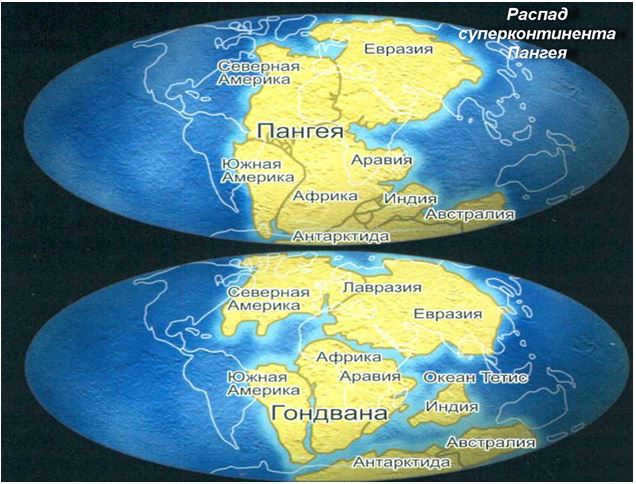
Source
Scientists hypothesize that in the distant future, the continents will once again come together to form a supercontinent similar to the ancient Pangaea, known as Pangaea Ultima.
There are still many mysteries and hypotheses surrounding the history of the Earth. One example is the origin of the Mariana Trench, which is the deepest trench in the world. Located near the Mariana Islands, the trench reaches a depth of 10,994 meters at its lowest point, known as Challenger’s Abyss. It is believed that this trench is situated in an area of the planet’s original oceanic crust.
The proportion of land compared to the ocean on our planet
The Earth has a total area of 510 million square kilometers, out of which the ocean covers 361 million square kilometers and land takes up 149 million square kilometers. This means that approximately 71% of the planet’s overall area is occupied by the vast world ocean, which separates the land into various continents and islands.
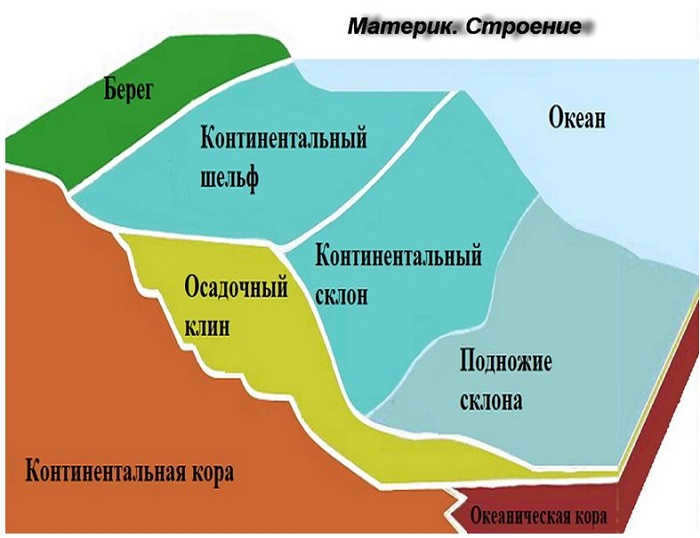
Reference
- An island is a piece of land surrounded by water on all sides. Mainland islands (such as Sakhalin and Novaya Zemlya) are connected to the mainland and can be reached by crossing underwater. Volcanic islands (like Iceland and the Hawaiian archipelago) form as a result of volcanic eruptions and the solidification of lava. Coral atolls (mostly found in the Pacific Ocean) are formed by reef-building marine organisms.
Overall, land makes up 29% of the Earth’s surface.
Historically, the Earth has been divided not only into continents but also into regions: the Americas, which unite two continents; Antarctica; Europe and Asia (considered Eurasia); Australia; and Africa.

Source
Australia is sometimes grouped together with Oceania, or Oceania is identified as a distinct part of the world.
Geographical position
Every geographical object has a location on the planet, which is its geographical position relative to other objects. Each continent has its own position in relation to:
- the equator;
- the prime meridian;
- the tropics;
- the polar circles;
- the oceans;
- other continents.
The nature, climate, and other characteristics of each continent are influenced by the specificities of its geographical location.
Geographical Environment and Humanity
The Earth’s outer layers were formed simultaneously and have always been closely interconnected. As a result of the Sun’s influence in the area of their closest contact, a unique shell known as the geographical shell was created. This shell is responsible for the emergence of life on Earth. The geographical shell encompasses the lower layers of the planet’s atmosphere, the upper parts of the lithosphere, the entire hydrosphere, and all organisms. It is a continuous but heterogeneous entity, comprising a massive planetary complex. This complex consists of various natural formations, both similar and distinct from one another.
The geographical shell is not uniform and can be divided into distinct natural complexes of varying sizes.
The geographical shell follows certain patterns and regularities:
- Integrity refers to the interconnectedness of natural elements, meaning that if one element undergoes a change, it inevitably affects the others as well.
- Zonality describes the change of nature complexes from the equator to the poles.
- Rhythmicity refers to the repetition of phenomena in time, such as the change of days and seasons.
- Cycles of matter, such as the geological cycle, involve the smoothing and formation of relief under the influence of factors like solar radiation and the energy of the Earth’s interior.
- The energy cycle is another example of a matter cycle.
The part of the Earth’s surface that is inhabited by humans is known as the geographic environment.
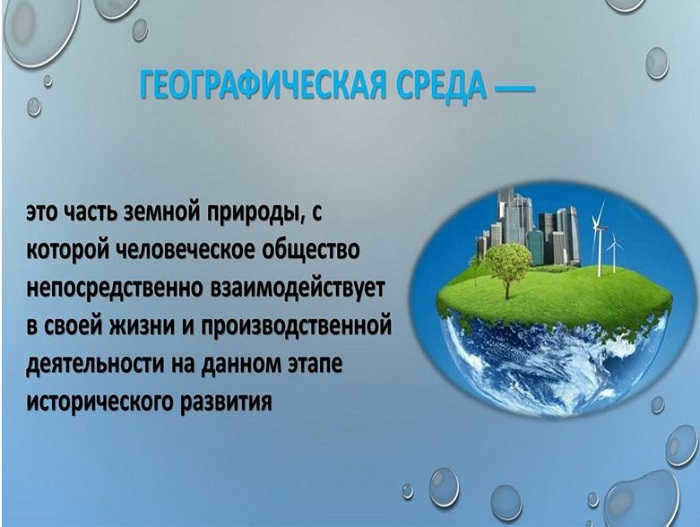
Source
This is the location where humans live and engage in various activities, comprising both natural and human-made elements. The geographical environment evolves through an ongoing interaction and exchange of materials between nature and humanity.
Alteration of the geographical environment
There are hardly any remaining natural complexes that are made up purely of natural components. They have all undergone varying degrees of alteration due to human influence. Cities, roads, bridges, and dams have been constructed, artificial canals connect rivers and seas, fields and plantations have been established, and even cosmodromes and artificial islands in the ocean have been created. As science and technology continue to advance, more and more of the Earth’s geographical landscape is being shaped by human activity, leading to transformations in the environment. Preserving the environment, addressing significant environmental issues, and restoring the balance between nature and society has become an urgent matter. To tackle these pressing problems of our time, scientists have put forward the following potential solutions:

- Shifting towards production methods that generate zero waste.
- Imposing restrictions on the consumption of material and energy resources.
- Preserving the natural environment and maintaining its original state.
The selection of the most suitable approach or combination of approaches depends on the specific characteristics of each region. This is why it is crucial to study geography.
The Earth’s Natural Diversity
The nature that surrounds us is composed of elements that have undergone a lengthy process of evolution, and their interconnectedness is not random, but rather natural. Collectively, the interaction between components of natural zones brings them together as a unified whole, where every element within this whole affects and relies on one another. This integrated system is known as a natural-territorial complex (NTC).
NTCs come in various sizes, encompassing the geographical shell, continents, oceans, as well as ravines and ponds.
The primary pattern of NTC distribution on Earth is geographical (latitudinal) zonality, which represents a consistent and logical progression of natural zones.
Zonality is also evident in the ocean, albeit in a more gradual manner. The ocean’s natural ecosystem is less varied and lacks certain elements such as climate and air masses.
In the case of mountains, the transition of natural conditions and PTC is referred to as altitudinal zonality. This phenomenon is attributed to the changing climate as altitude increases. For every kilometer of upward ascent:
- the air temperature decreases by 6 degrees;
- air pressure and dust levels decrease;
- precipitation and cloud cover increase.
As the mountains rise higher, the altitude belts become more distinct and pronounced. These belts are formed by different natural zones that stack on top of each other. The mountain landscapes mirror the landscapes found in the plains, with each zone following the same order. The vertical zoning always starts with the zone where the mountain system is situated.
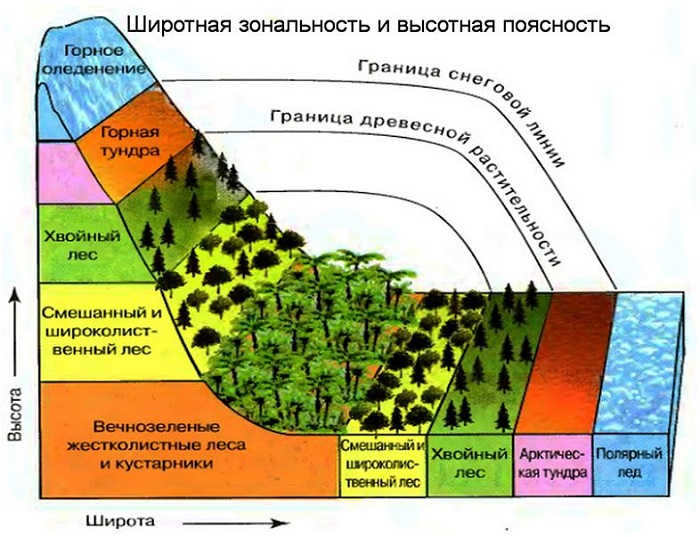
Source
Ocean vertical zonation is similar to altitudinal zonation, but it is primarily influenced by the decrease in sunlight penetration.
We have examined the geological past of Earth, the formation of continents and oceans, and the interaction between the physical environment and human activities. We have become acquainted with the concept of geographical zonation, which is a fundamental principle in geography. The principle of latitudinal zonation and altitudinal zonation involves the progressive transition of natural zones and geographical processes from the equator to the poles.

